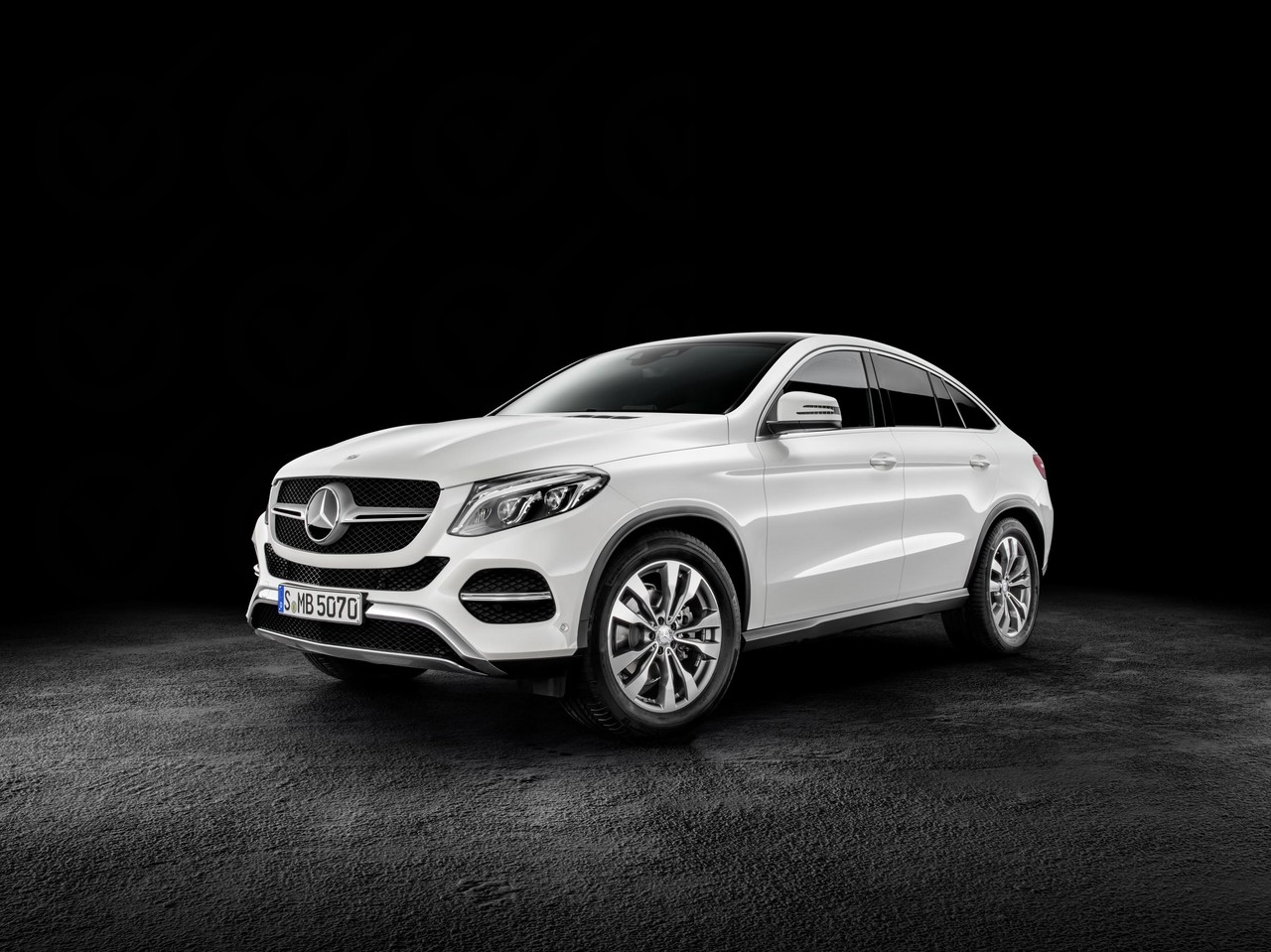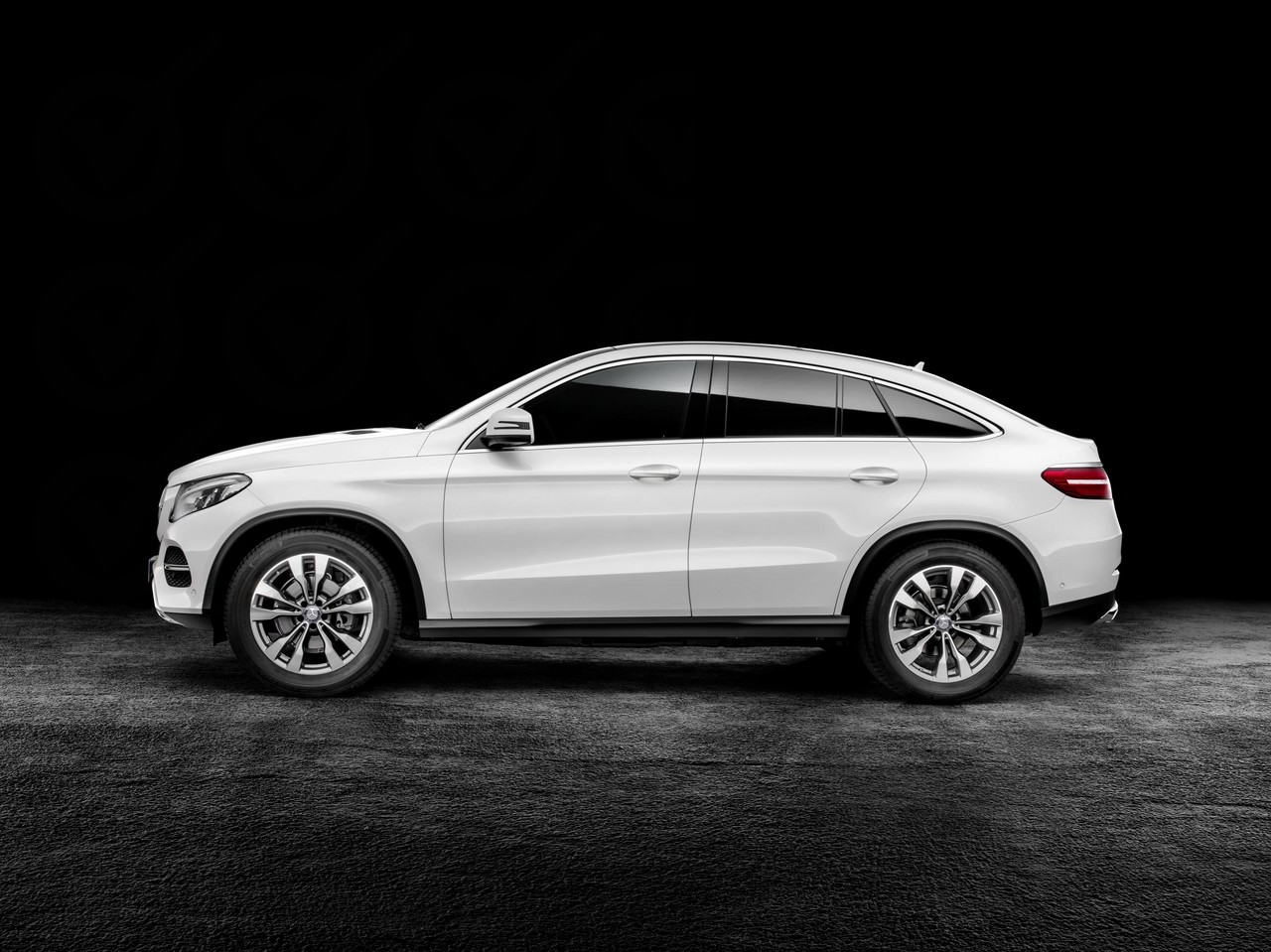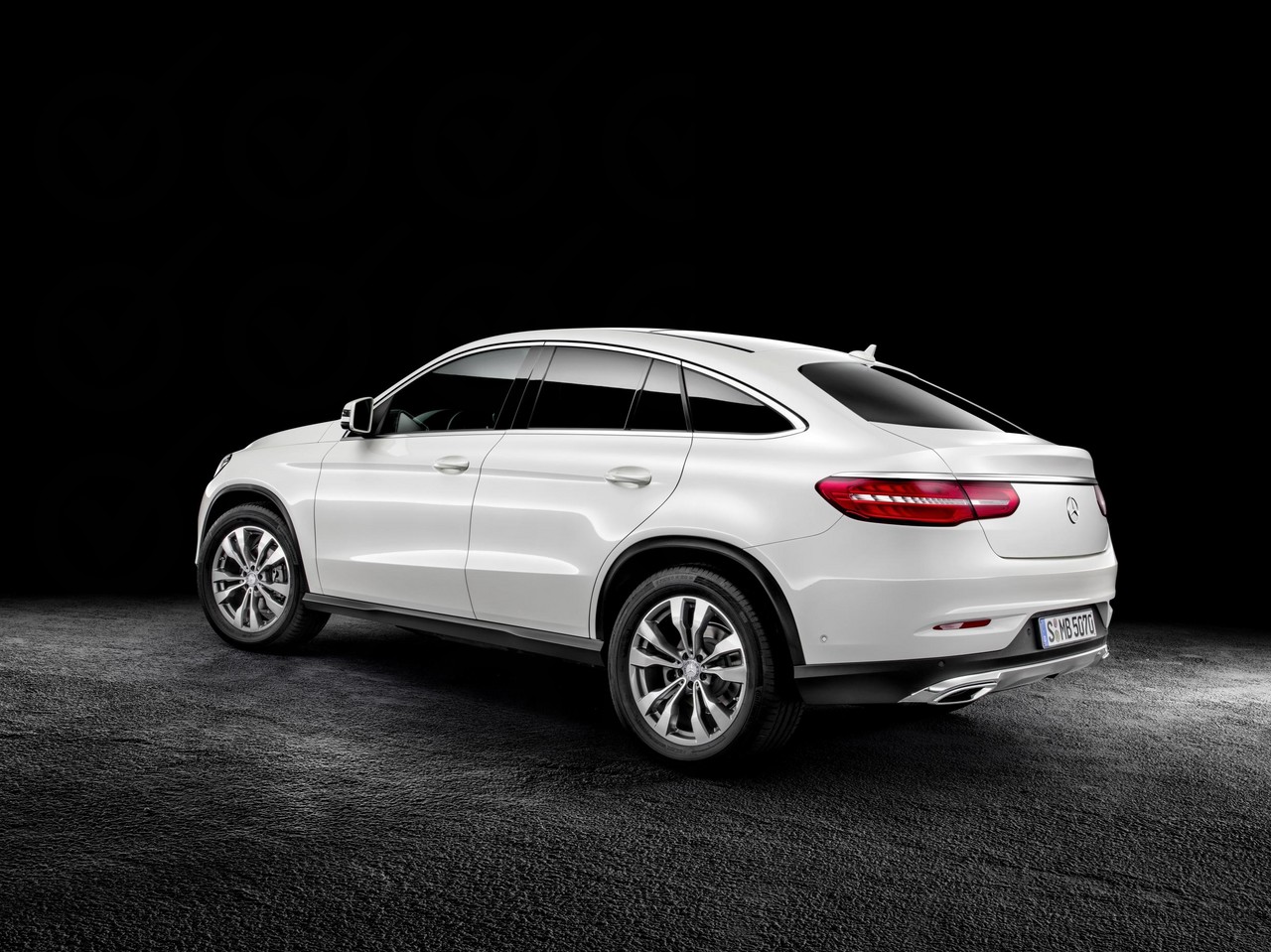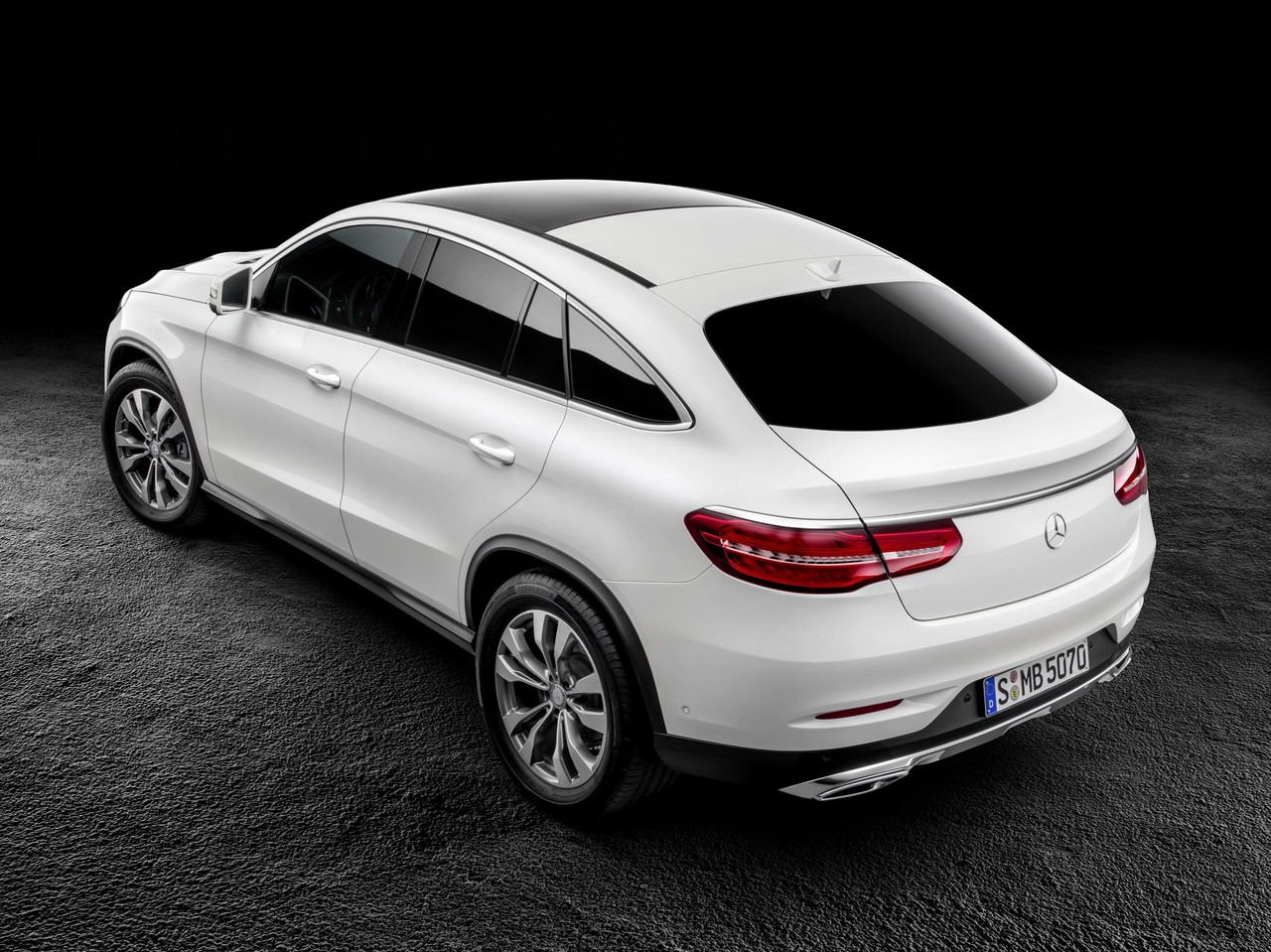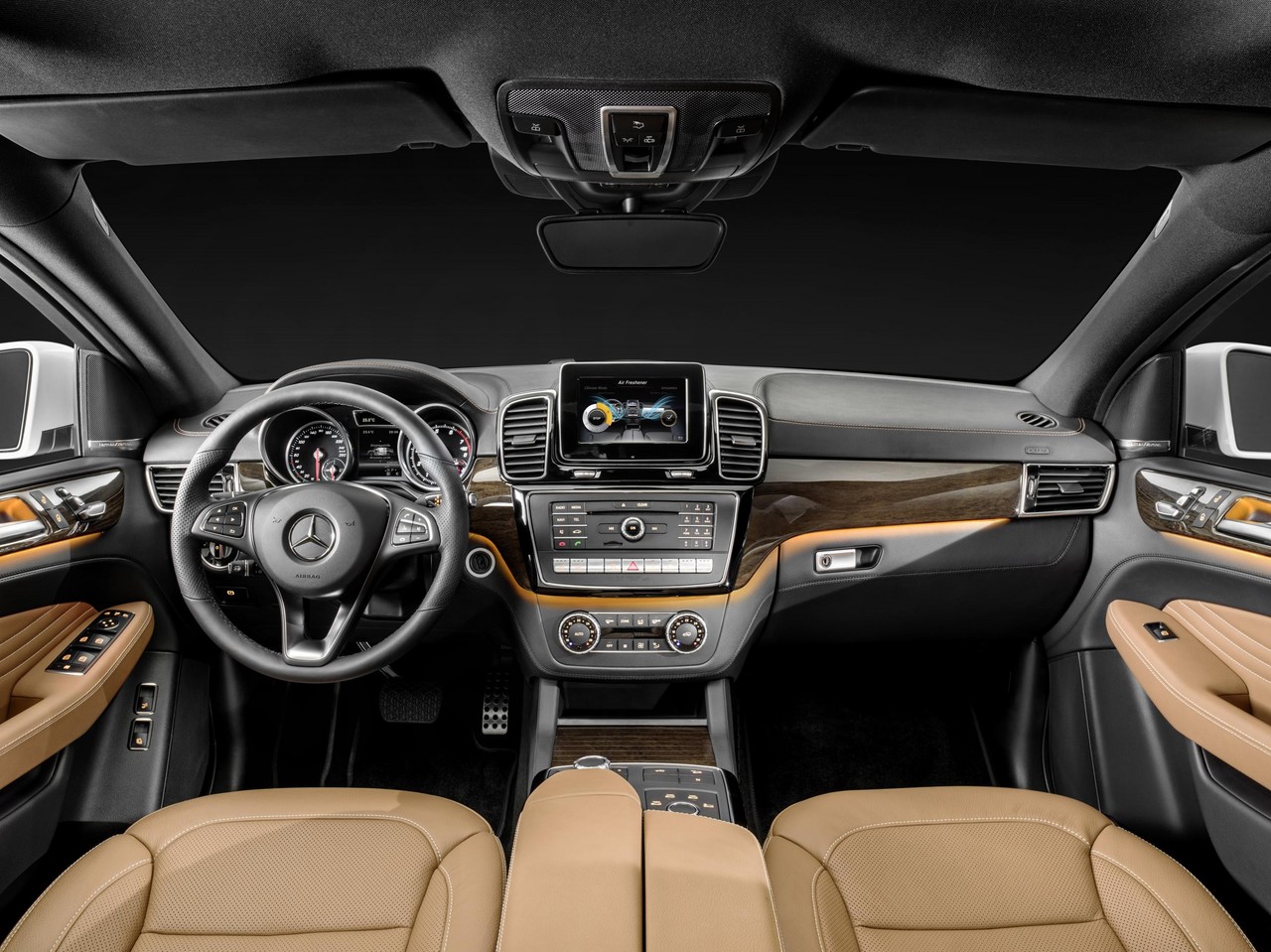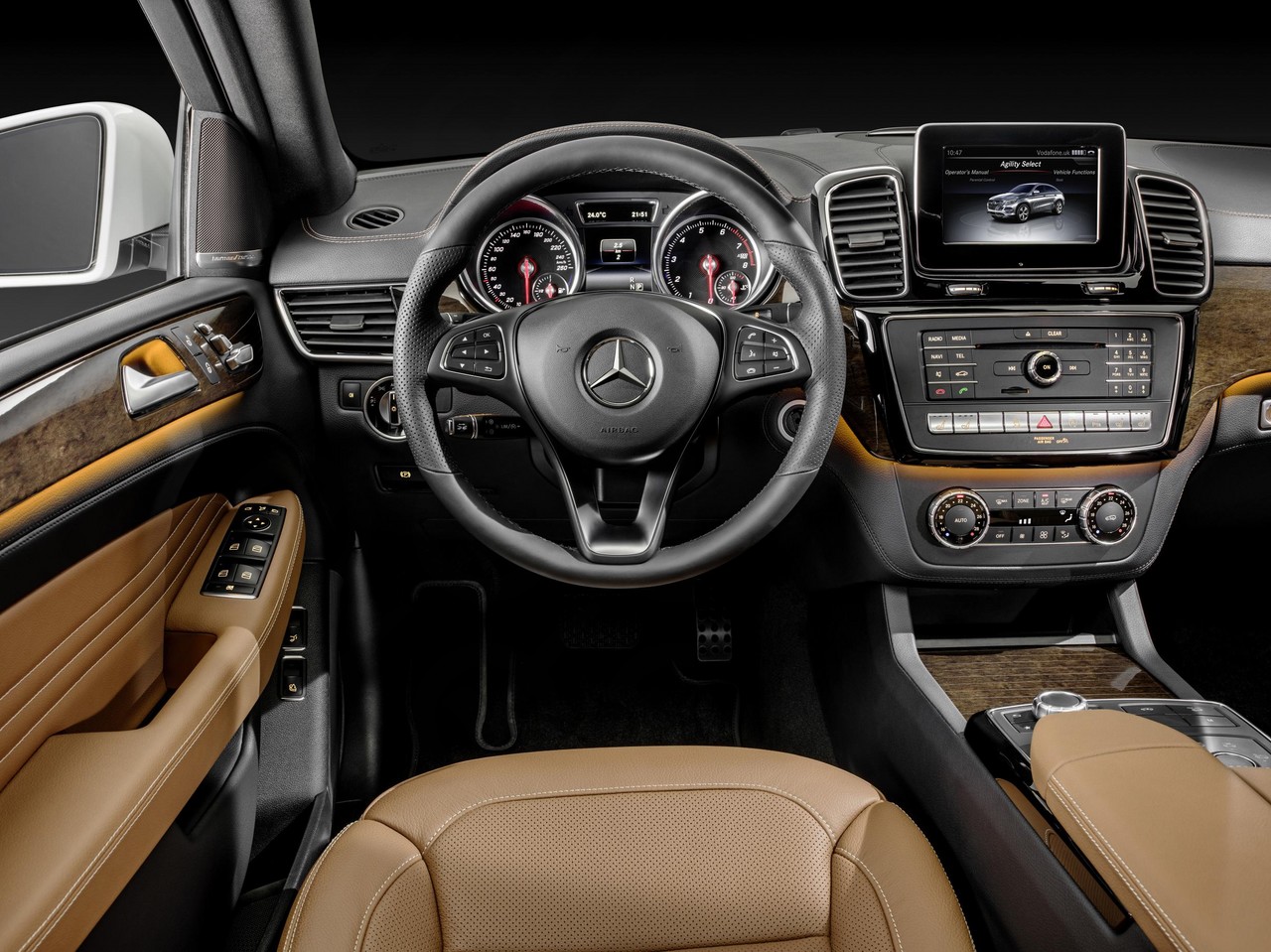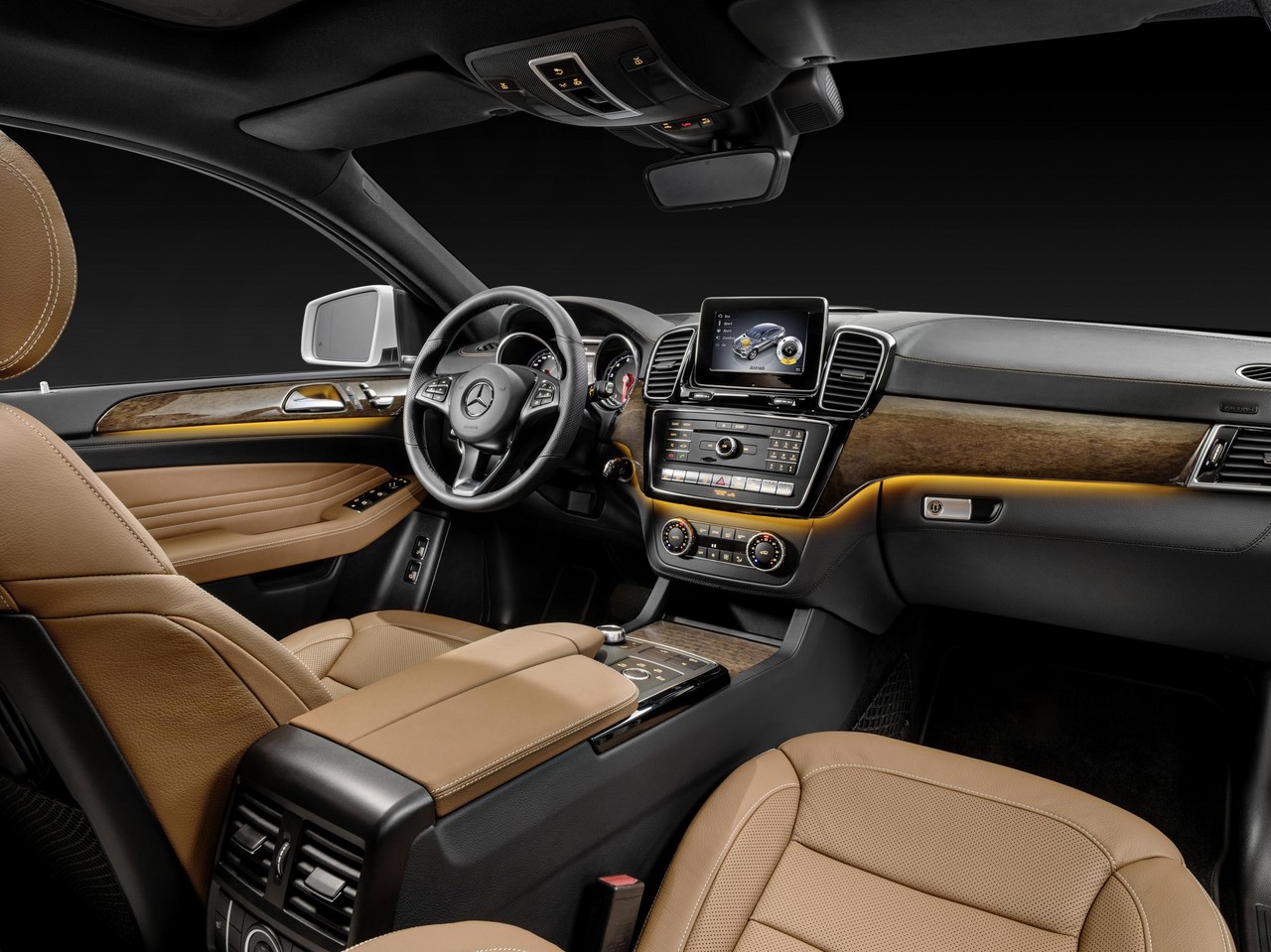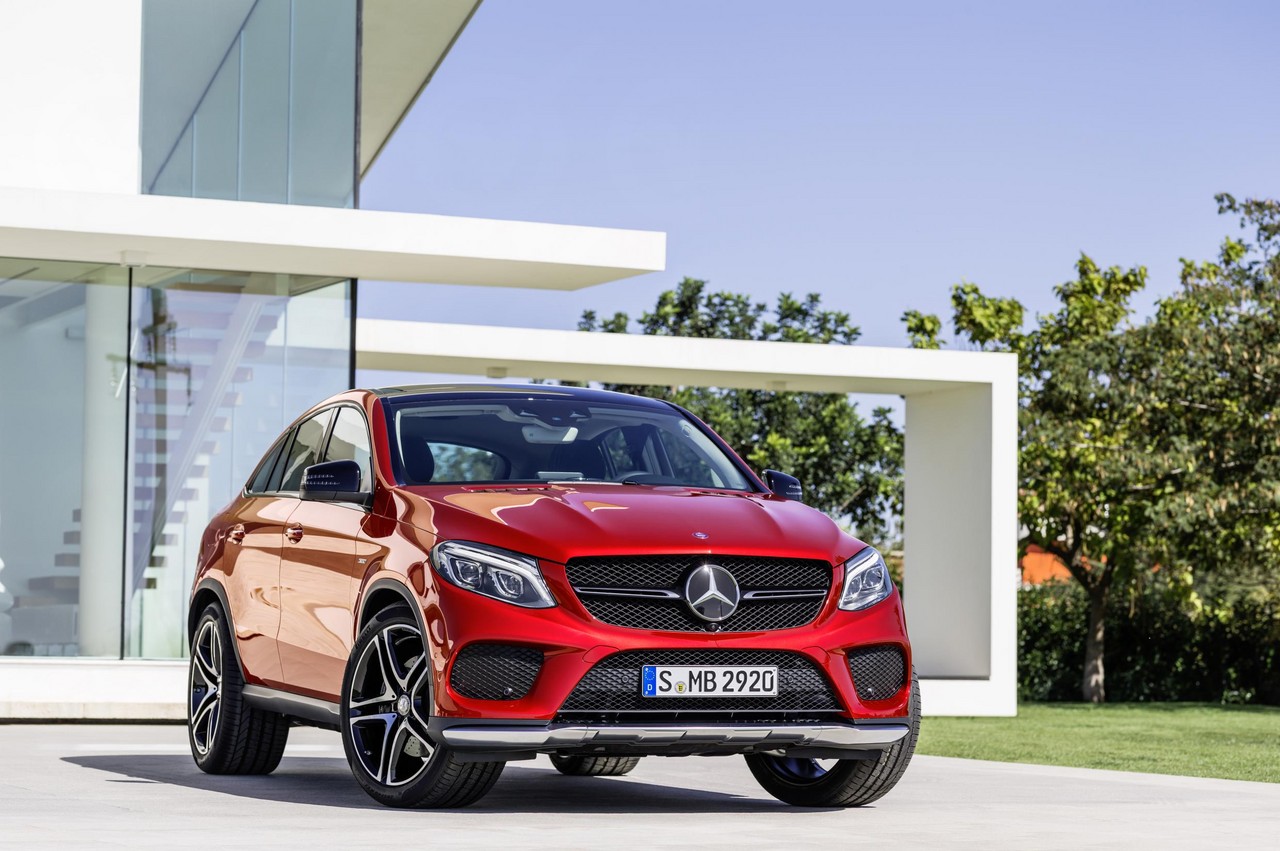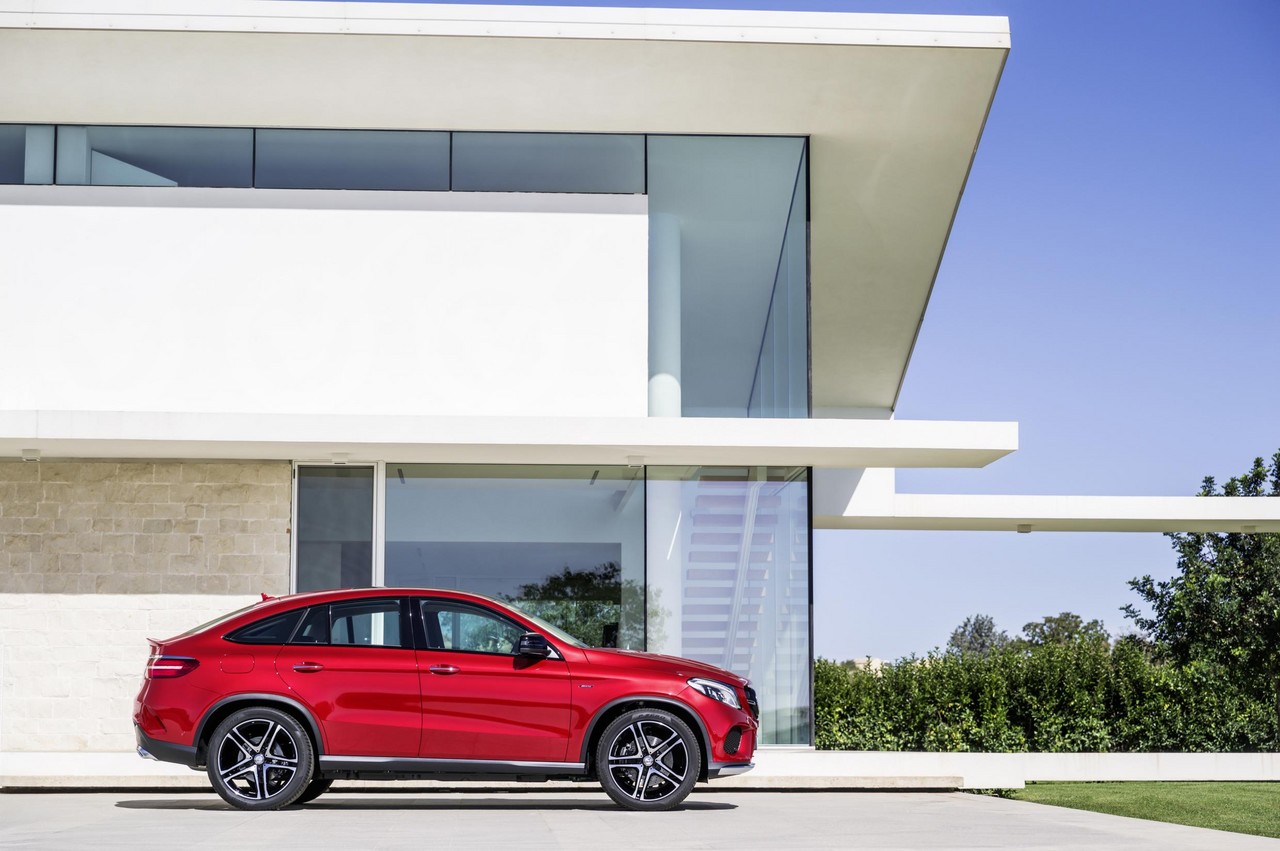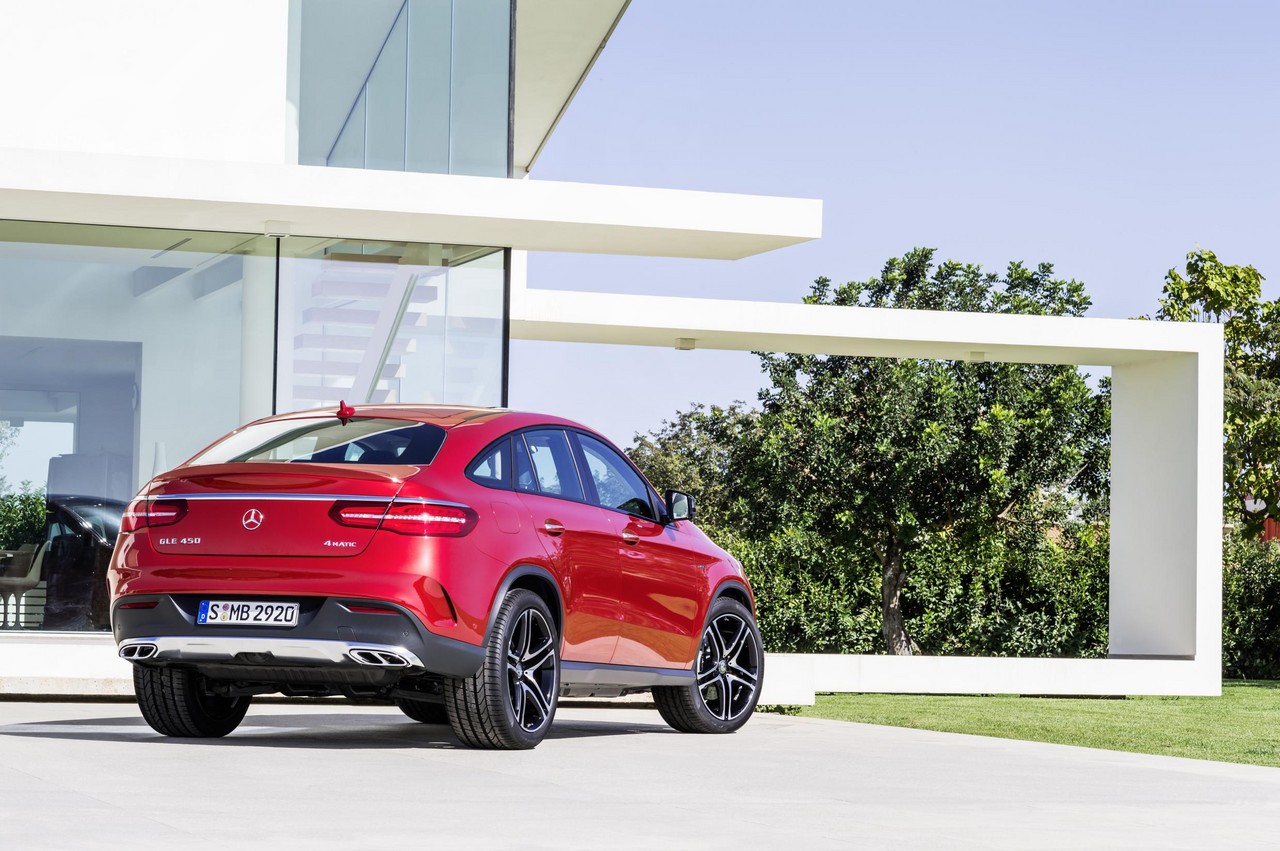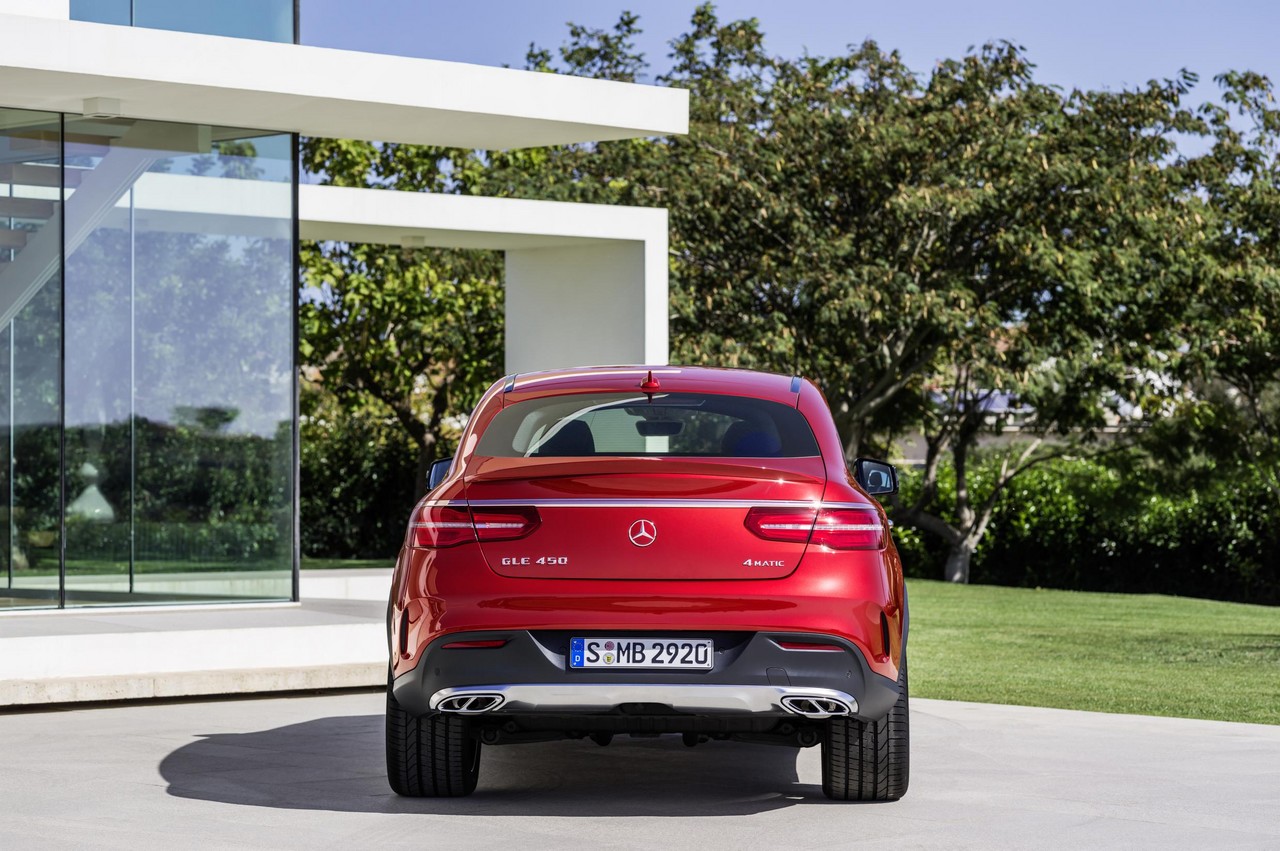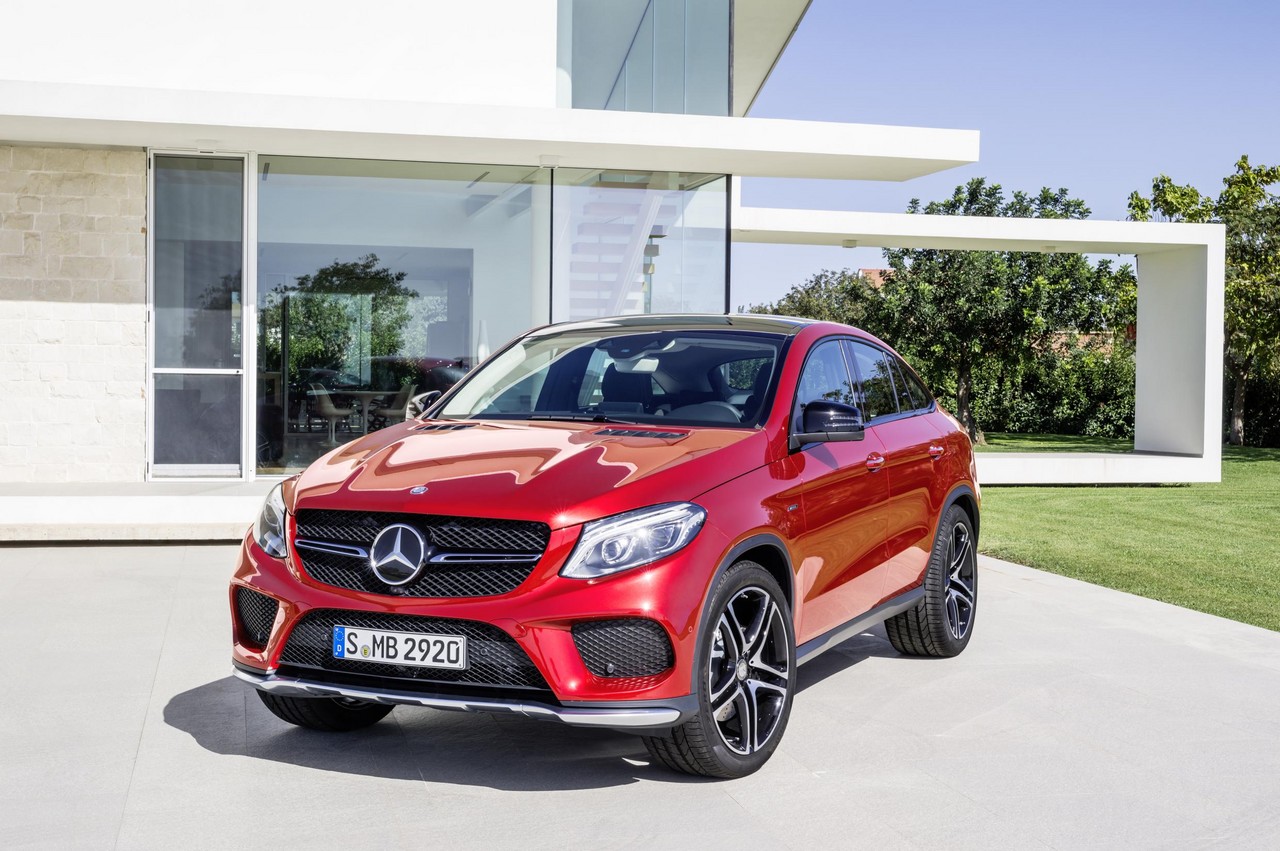
- Fuel-efficient turbo-diesel engines
- Comfortable ride and competent dynamics
- High standard of interior fit and finish
- Raked roofline compromises visibility, rear headroom and luggage space
- Weight blunts dynamics
- Light steering lacks feel
Overview
Available to order from June 2015, the Mercedes-Benz C292 GLE Coupe was a large SUV with a coupe-like profile. Manufactured in Tuscaloosa, Alabama, the four-wheel drive GLE Coupe range initially consisted of the GLE 350 d and GLE 450 AMG models, powered by 3.0-litre turbo-diesel and 3.0-litre biturbo petrol V6 engines. Both models were fitted with a nine-speed automatic transmission as standard.
Please note that the related Mercedes-AMG C292 GLE 63 S has been reviewed separately.
| Engine | Trans. | Peak power | Peak torque | |
|---|---|---|---|---|
| GLE 350 d | 3.0-litre turbo-diesel V6 (OM642) | 9sp auto | 190 kW at 3600 rpm | 620 Nm at 1600-2400 rpm |
| GLE 450 AMG | 3.0-litre biturbo petrol V6 (M276) | 9sp auto | 270 kW at 5500 rpm | 520 Nm at 1400-4000 rpm |
4MATIC all-wheel drive system
The 4MATIC four-wheel drive system for the Mercedes-Benz C292 GLE 350 d and GLE 400 was the same as that in the W166 M-Class, i.e. full-time four-wheel drive with three open differentials and a default 50:50 front:rear torque split; for the GLE 45 AMG, however, the default front:rear torque split was 40:60. In the event that any wheel was expected to lose traction, the adaptable traction control system (‘4ETS’) could brake that wheel to transfer torque to the wheels with grip.
Platform and dimensions
The C292 GLE Coupe shared its platform with the W166 M-Class ; relative to the W166 M-Class, however, the GLE Coupe was 97 mm longer (at 4900 mm), 128 mm narrower (2003 mm), 65 mm lower (1731 mm) and had a 1 mm shorter wheelbase (2915 mm).
Suspension
The Mercedes-Benz C292 GLE Coupe had double wishbone front suspension and multi-link rear suspension. As standard, the GLE Coupe’s suspension included ‘Airmatic’ air suspension with Mercedes-Benz’s continuously variable damping system ‘ADS Plus’. ADS Plus enabled the driver to select from Comfort, Sport, Slippery and Individual drive modes; for the GLE 450 AMG, the driver could also engage a Sport+ drive mode.
The GLE 450 AMG was also fitted with an ‘Active Curve System’ which used active anti-roll bars on the front and rear axles to minimise body roll.
Steering
The C292 GLE Coupe had rack-and-pinion steering with electric power assistance.
Safety equipment
Standard safety equipment for the Mercedes-Benz C292 GLE Coupe included dual front airbags, a driver’s knee airbag, front and rear side airbags, full-length curtain airbags (i.e. for front and rear occupants), ABS, electronic brake force distribution, brake assist, electronic stability control, traction control, active front seat head restraints, and front seatbelts with pre-tensioners and load limiters.
The Mercedes-Benz GLE Coupe was equipped with Mercedes-Benz ‘Pre-Safe’ system which provides automatic tensioning of the front occupants’ seatbelts, closing of the windows and sunroof and adjusting the front passenger seat (if the memory package were fitted) when a collision is anticipated. In the event of a pedestrian collision, the GLE Coupe’s bonnet would also rise to cushion the pedestrian’s subsequent impact with the bonnet (‘Active Bonnet’).
As standard, the C292 GLE Coupe was fitted with the following active safety technologies:
- Distronic Plus (adaptive cruise control with brake warning): an ‘adaptive’ cruise control system which used two short-range radar sensors positioned behind the front bumper to monitor the road up to 30 metres ahead, and a long-range radar located behind the radiator grille which had a range of 200 metres. Operating at speeds up to 200 km/h, Distronic Plus used an electronic control unit to analyse the information from both radar systems to calculate the engine, automatic transmission and braking parameters required for proximity control. As such, Distronic Plus could automatically apply the brakes to prevent the vehicle from becoming too close to traffic ahead (the time interval could be specified) and accelerate back to the set speed when traffic allowed. To accelerate from rest, the driver only needed to operate the Distronic stalk on the steering column or briefly depress the accelerator pedal. With Distronic Plus, automatic deceleration of up to four (4) m/s2was possible. If Distronic Plus detected that heavier braking was required, a warning light would illuminate in the instrument cluster and be accompanied by an audible warning. Furthermore, the electronic proximity control system could be activated independently of Distronic Plus at speeds over 30 km/h to alert the driver if they were approaching another vehicle too rapidly;
- Steering Assist with Stop&Go Pilot: operating in conjunction with Distronic Plus and at speeds up to 130 km/h, Steering Assist used a stereo camera located behind the windscreen to detect road markings, while the Stop&Go Pilot operated at speeds up to 60 km/h and enabled the system to use the vehicle in front or road markings as a means of orientation. If the vehicle was detected to be drifting out of its lane, Steering Assist would warn the driver and provide steering intervention to keep the vehicle in its lane;
- Collision Prevention Assist Plus (radar-based collision warning with autonomous braking and adaptive Brake Assist): operating at speeds up to 250 km/h to monitor the traffic ahead and at speeds up to 50 km/h for stationary objects, Collision Prevention Assist would issue a visual warning (when driving at speeds over 7 km/h) and an optical warning (when driving at speeds over 30 km/h if there was a collision risk. At speeds below 105 km/h (250 km/h in conjunction with Distronic Plus), Collision Prevention Assist Plus would initially provide partial autonomous braking to reduce vehicle speed and alert the driver. Furthermore, adaptive Brake Assist would calculate the braking force required and prime the braking system for optimum response when the driver depressed the brake pedal. If the driver did not respond and a collision was unavoidable, then maximum braking force would be applied to reduce vehicle speed. At initial vehicle speeds of up to 40 km/h, rear-end collisions could be prevented;
- Active Blind Spot Assist: active at speeds above 60 km/h, a corrective braking force would be applied to the wheels on one side of the vehicle if the driver attempted to change lanes when a vehicle was detected in the driver’s blind spot;
- Cross-Traffic Assist: could operate at speeds up to 72 km/h and used the stereo camera and radar sensors to detect traffic that was crossing in front of or behind the vehicle. If detected, the driver would receive visual and audible alerts;
- Active Lane Keeping Assist: would vibrate the steering wheel as the vehicle approached a continuous lane marking line and, if crossed, automatically brake wheels on one side of the vehicle to return the vehicle within the lane;
- Crosswind Assist: could detect sudden, strong gusts of wind and prevent the vehicle from drifting out of its lane via corrective braking forces on one side of the vehicle; and,
- Attention Assist: operated at speeds in excess of 80 km/h and assessed driver behaviour (including steering movements) for signs of drowsiness; if detected, the driver would be provided with visual and audible warnings.
Features: Mercedes-Benz GLE 350d Coupe
Standard features for the Mercedes-Benz C292 GLE 350d Coupe included 21-inch AMG five twin spoke alloy wheels, COMAND APS with a 20.3 cm TFT colour display, HDD navigation, ‘Linguatronic’ voice control, SD/USB interface, Bluetooth mobile phone connectivity and audio streaming, an 830 watt Harman Kardon Logic 7 surround sound system with fourteen speakers, a CD/DVD player with MP3/WMA/AAC compatibility, digital radio (DAB+) tuner and 10GB music register, AMG Line Nappa leather upholstery, AMG Line front sports seats, power adjustable and heated front seats with memory settings, dual-zone climate control air conditioning, cruise control with variable speed limiter (‘Speedtronic’), adaptive LED headlights, LED daytime running lights, front and rear parking sensors, 360 degree cameras, rain-sensing wipers, Nappa leather sports steering wheel with gearshift paddles, load-through rear seats, remote central locking with proximity key, power windows, power adjustable and heated mirrors with folding function, auto-diming interior and door mirrors, power adjustable steering column, driver memory settings (steering column and door mirrors), a power operated tailgate (‘Easy-Pack’), electric parking brake, push-button start, AMG velour floor mats, ambient lighting, rear privacy glass, double sunblind, black poplar wood trim, lockable glovebox, tyre pressure monitoring, a trip computer and an immobiliser.
As standard, the GLE Coupe was fitted with Mercedes-Benz’s ‘Active Parking Assist’ system which could identify suitable parallel parking spaces – when traveling at speeds of up to 36 km/h – and autonomously steer the vehicle as the driver reversed towards the parking space.
Features: GLE 450 AMG Coupe
Compared to the GLE 350d, the GLE 450 AMG was further equipped with 22-inch AMG five twin spoke alloy wheels, panoramic sliding sunroof, rear spoiler and an alarm system with tow-away detection and infra-red interior monitoring.
The GLE 450 AMG Coupe could be identified by its two-pipe exhaust system with two integrated, chrome-plated tailpipe trims.
